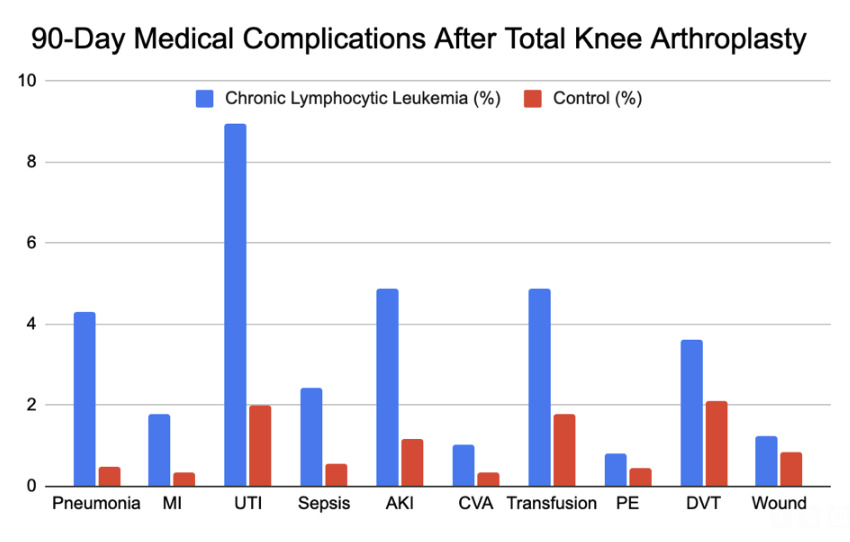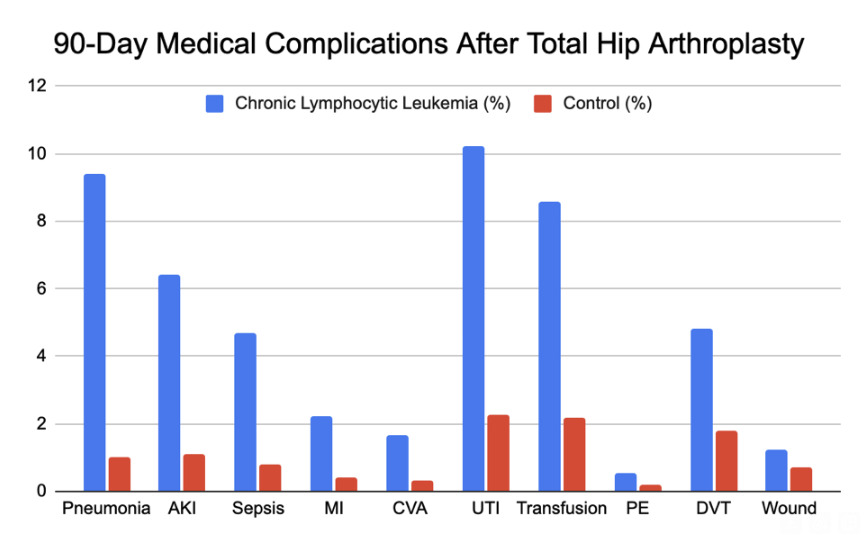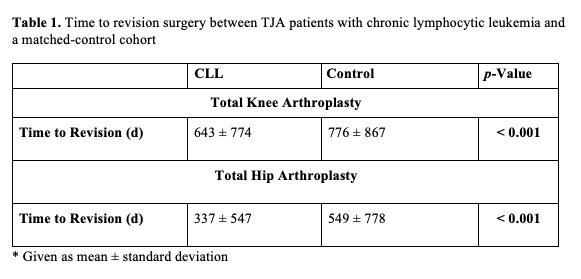1Rodriguez H, 1Mekkawy K, 2Rust B, 1Gomez O, 1Corces A, 3Roche M
1Larkin Community Hospital, South Miami, FL, United states; 2Nova Southeastern University, Dr. Kiran C. Patel College of Osteopathic Medicine, Davie, FL, United states; 3Hospital for Special Surgery, West Palm Beach, FL, United States
Introduction
Chronic lymphocytic leukemia (CLL) is a neoplasm affecting blood and bone marrow, leading to abnormal mature lymphocyte production. Surgical procedures in CLL patients can result in higher complication rates, including infections, delayed healing, and hematologic issues. This study aims to evaluate 1) 90-day medical complications, 2) implant-related complications, 3) healthcare utilization, and 4) time to revision surgery in patients with and without CLL undergoing total joint arthroplasty (TJA).
Methods
CLL cases undergoing total knee arthroplasty (TKA) and total hip arthroplasty (THA) were identified using relevant diagnostic and procedural codes. CLL TKA patients were matched 1:5 with controls based on demographics and comorbidities. A similar process was followed for THA patients. Outcomes included 90-day medical complications, 2-year implant complications, length of stay (LOS), 90-day readmission, and time to revision surgery.
Results
CLL TKA patients had significantly higher odds of all assessed 90-day medical complications compared to controls, with the most notable increases in pneumonia (OR 9.23; CI 7.10-12.0, p<0.001) and myocardial infarction (OR 5.50; CI 3.86-7.82, p<0.001). Similarly, CLL THA patients had significantly greater odds of all 90-day medical complications, especially pneumonia (OR 10.0; CI 8.21-12.2, p<0.001) and acute kidney injury (OR 6.31; CI 5.11-7.79, p<0.001). CLL TKA patients faced higher odds of periprosthetic fracture, mechanical loosening, and prosthetic joint infection. For THA patients with CLL, periprosthetic fractures were notably increased. THA revisions occurred earlier than TKA (337 days vs. 643 days), and CLL patients had longer LOS (5.9 vs. 3.1 days, p<0.001) and higher 90-day readmission rates (OR 1.14; CI 1.03-1.27, p=0.011).
Conclusions
CLL is linked to significantly higher medical and prosthetic complications, prolonged hospital stays, and increased readmission rates following TJA. Orthopaedic surgeons should consider CLL status for informed patient counseling and complications mitigation.






